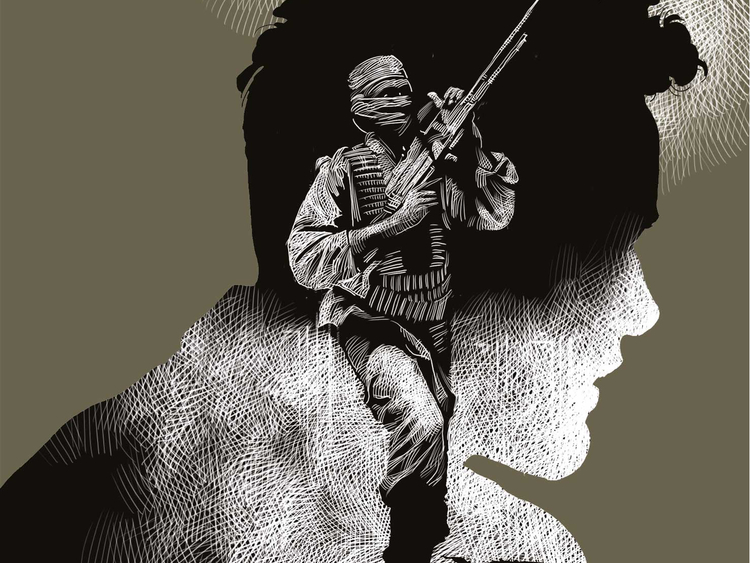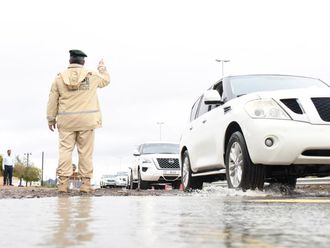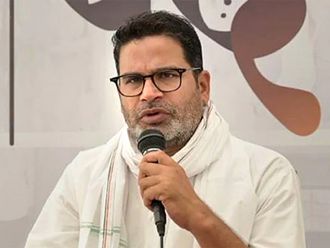True, the end is nigh for Daesh (the self-proclaimed Islamic State of Iraq and the Levant). As we speak, the group’s army is on the run, driven from one refuge to the next, and its delusional ‘caliphate’ is shrinking fast, exposing the whole grandiloquent enterprise as a sham. But beyond the terror and the brutality, beyond the beheadings and the ethnic cleansing, what desolation has this regressive group wrought on our cultural heritage? Indeed, what irreparable damage has been inflicted on that heritage since the American invasion of Iraq in 2003 and the Arab Spring uprising in Syria in 2011?
The answer? I’m convinced that no one looking at the wasteland that is Mosul and Palmyra, Raqqa and Aleppo, would find the term gut-wrenching easy to refute.
Consider Palmyra, the city in central Syria, whose ancient art and architecture, monuments and artefacts, temples and colonnades, date back to antiquity. There, Daesh went on the rampage, even destroying buildings with no religious meaning, such as the Arch of Triumph, a Roman archway erected in the 3rd century. (Daesh let stand the Roman Theatre, where the group filmed its executions in 2015, including the gratuitous execution of Palmyra’s elderly, retired chief of antiquities, Khalid Al Assad.) Thus, the heritage of centuries was wiped out with seemingly impressive ease.
Nor should Mosul be spared consideration either. When Daesh overran this city in a blitzkrieg in June 2014, its militias’ first order of business — in addition to the atrocious campaign of ethnic cleansing of Assyrian, Armenian, Yazidi and other minorities — was to destroy whatever they encountered there of Iraq’s cultural heritage.
They ransacked the Mosul Library, where they reportedly pulped more than 112,000 books. Priceless statues and artefacts plucked from the Mosul Museum were thrown out, like broken toys — or sold for profit.
Then in late June this year, as the noose tightened around Daesh in the city, the group did something unpardonable, something that Unesco director-general Irina Bokova branded “a form of cultural cleansing”: They blew up the city’s Great Al Nouri Mosque, one of Iraq’s great treasures, which had stood there, with its iconic leaning minaret, for nearly 850 years.
Also yet to be considered is the unspeakable fate that befell our cultural heritage in the city of Aleppo — this one caused not by Daesh excesses but by indiscriminate air strikes, barrel bombs and shelling, courtesy of the regime in Damascus. Like Palmyra and Mosul, Aleppo traces its origins thousands of years, in a region deservedly recognised as the cradle of civilisation.
In December 2016, for example, satellite imagery of this oldest continuously inhabited city in the world, taken by Unosat — a group tasked with providing high-quality geospatial information to United Nations decision-makers — showed the scale of destruction there. The analysis compared the total number of buildings in pre-conflict imagery with an image of what Aleppo looked like after five years of relentless bombing. Well, think Dresden! Think ravaged, void, empty! All is gone, or partially ruined. All left with calamitous damage — damage to the architecturally exquisite Great Ummayad Mosque, built in 717, its minaret a pile of rubble; damage to the famous Old City Citadel, considered one of the oldest and largest castles in the world; and damage to the colourful Madina Souq, the largest covered historic marketplace in the world.
Here I will indulge in a recollection, in context. In the Spring of 1997, as a Palestinian exile who had lived in the West since his mid-teens, I visited, among other places in the Arab world, that same Old City of Aleppo. And when you visit a wondrous place like that, a part of it stays with you, or maybe a part of you stays there with it, forever. That’s the teleological magic that imbues our ancient habitats in the old sod.
Destroy a people’s cultural heritage, I say, and you destroy their history. Not for nothing are most societies around the world so vehemently protective of their cultural heritage. The reason is simple: By preserving those tangible, even intangible objects (say folk dancing, story-telling, manners of ceremonial exchange), that we inherit from past generations, we not only preserve objects, but we validate memories, we codify immemorial reflexes and twists of feeling in our national consciousness, we inhabit a contour of communal experiences as familiar to us as the contour of sky and land in our patrimony. In short, we feel the pulse of our cultural heritage as we feel the wince of our own muscles.
So let those young, albeit alienated Muslims who were — even fleetingly — seduced by the grandiose, but in the end hollow, blandishments of Daesh, learn their lesson: Subverting one’s faith, as this group has so unforgivably subverted Islam during its three-year reign of terror, can wreak havoc on the geography of a people’s soul. Those who do not learn from their history are not only, as George Santayana put it, doomed to repeat it, but are simply doomed.
Fawaz Turki is a journalist, lecturer and author based in Washington. He is the author of The Disinherited: Journal of a Palestinian Exile.











